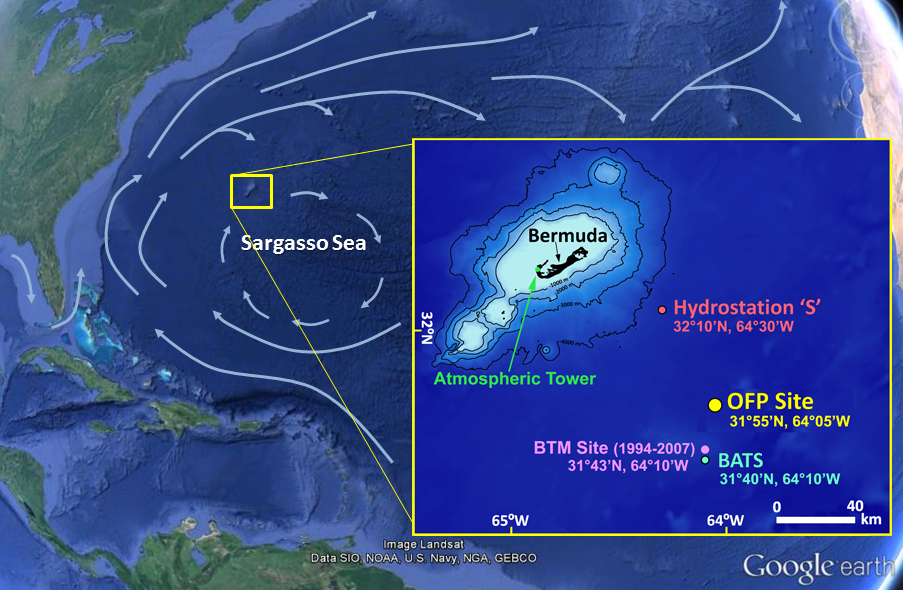Oceanic Flux Program
Microscopic plants and animals in the surface ocean produce sinking matter that transport organic materials, as well as inorganic materials admixed with biogenic particles, from the surface to the ocean interior and, eventually, to the ocean seafloor. This transport via sinking particles, or particle flux, provides the fuel that supports life in the ocean interior and controls, in part, the global cycling of nutrients and many elements, and the ocean’s uptake of atmospheric carbon dioxide. The residual flux material that survives transport through the water column to become incorporated into the deep sea sediments preserves a rich stratigraphic record of past ocean conditions. This is studied by scientists to reveal the history of the past ocean and Earth's climate.
The Oceanic Flux Program (OFP) time-series of particle flux in the deep Sargasso Sea is the longest-running time-series of its kind, now spanning over four decades of continuous measurement. At the heart of the OFP time-series is a deep ocean subsurface mooring anchored in 4500 meters of water about 75 kilometers southeast of Bermuda, near the Bermuda Atlantic Time-series Study (BATS) site. The OFP mooring contains sediment traps at depths of 500 m, 1500 m and 3200 m that continuously collect the particle flux at an approximate two-week temporal resolution. The mooring also hosts instruments that measure temperature, salinity and oxygen at selected depths, and an Acoustic Doppler Current Profiler (ADCP) at the top that measures the profile of ocean currents and eddies from the surface to a depth of 300 m.
The OFP time-series provided the first direct evidence for seasonality in the deep ocean and the tight coupling between the deep ocean and the surface via the particle flux. OFP results have documented variations in material fluxes to the deep ocean on time-scales of weeks-decades that are driven by temporal and spatial variability in overlying physical and biological processes, the intensive biological reprocessing of the flux by midwater ecosystems, and advection of materials from the continents to the central gyres by deep water circulation and atmospheric transport. As the record lengthens, the OFP time-series is providing key data central to understanding how changing climate patterns, such as the North Atlantic Oscillation, and extreme events such as hurricanes, will affect the ocean’s interior.
The synergy between the OFP and other research programs co-located at the Bermuda time-series site allows for unprecedented opportunities to study the linkages between ocean physics, biology and chemistry and the deep ocean environment.
For more information on the OFP, including a list of publications and how to use cruise samples for research collaborations, please visit the OFP website.

Project Contact
Dr. Maureen Conte
Senior Scientist
[email protected]
Tel: 508-289-7744